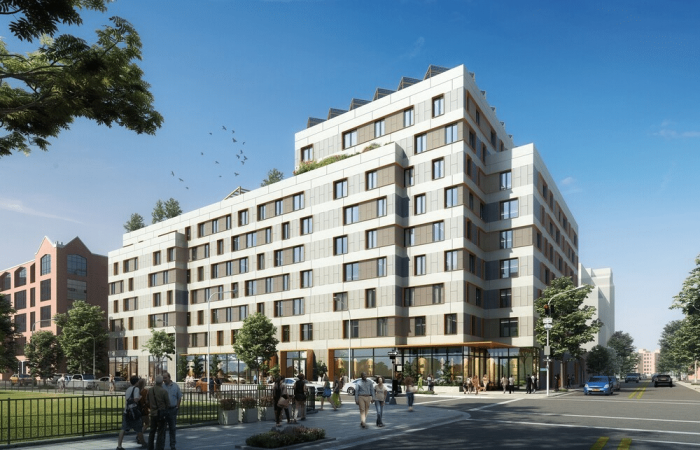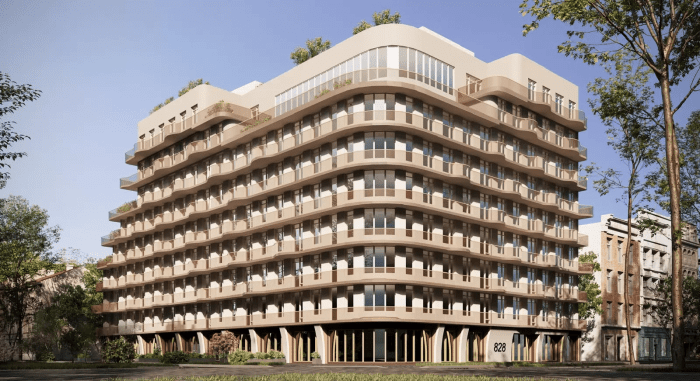City officials backtracked a bit this week from a bombshell proposal to convert Seventh and Sixth avenues into one-way thoroughfares, saying the much-reviled proposal would be killed if residents reject it at a meeting next week.
“These plans need community board approval and if the community doesn’t support [it], we will not move forward,” the agency said in a statement this week.
That promise suited Park Slope — both the man and woman on the street and the men and women they elected.
“I don’t want to say anything official until I hear all the details, but [converting the avenues] sounds like a really dumb idea,” said Assemblywoman Joan Millman (D-Cobble Hill).
Park Slope had virtually unified around defeating this idea — a first step towards tackling the game-night gridlock expected after Bruce Ratner’s Nets arena. The company now says the arena will open in 2010 (see story, page 13).
“People who aren’t normally activist types are calling us to ask what they can do to prevent this,” said Lydia Denworth, president of the Park Slope Civic Council, who directed residents to Thursday night’s meeting (see box, right). “There’s been an intensely negative reaction from the residents.”
Most people have been complaining about the prospect of more speeding cars. If this proposal is implemented, Sixth Avenue could become very much like Eighth Avenue — where cars treat the one-way road like a highway, swerving around double-parked cars, not having to worry about oncoming traffic.
Both streets currently carry the standard city speed limit of 30 miles per hour. But such a rate of speed — and higher — is easily obtainable on Eighth Avenue, where drivers have the benefit of open road and a steady procession of timed green lights.
On Sixth Avenue, not only are the lights timed to a much more leisurely pace, but hitting 30 miles per hour is virtually impossible because the lanes are tighter and other drivers are frequently doing U-turns.
And that’s just how Denworth and others like it.
“In our view, two-way streets are more conducive to a better quality of life for residents and merchants as well,” she said.
DOT says that turning Seventh Avenue — currently a busy commercial strip — and Sixth Avenue — currently a quiet residential street — into one-way thoroughfares would alleviate congestion and, they say, make the roads safer.
It would “simplify the turning movements at intersections along the avenues which would enhance safety for pedestrians and motorists,” the agency said in a statement.
Behind all the talk of transportation policy and urban planning is the looming shadow of Atlantic Yards, which, as proposed, would add 15,000 to 20,000 residents to neighboring Prospect Heights and bring 19,000 screaming basketball fans to the area every game night.
Atlantic Yards is a state-approved project, but the job of fixing its myriad traffic woes belongs to the city.
Some credited the DOT for at least rolling up its sleeves to fix a congestion problem that doesn’t exist yet, but experts aren’t sure if this is the right way to go about it.
“It’s just a terrible idea,” said traffic expert Andy Wiley-Schwartz, who is also the director of the transportation program at the Project for Public Spaces.
“We don’t know what problem they’re trying to solve, and that’s a problem in and of itself,” he added.
Perhaps the confusion stems from the fact that this kind of conversion doesn’t happen very often. The last push for such a one-way conversion was in 2001, when merchants along Third and Fifth avenues in Bay Ridge thought that one-way streets would help their businesses by facilitating deliveries and reducing traffic. But the measure was defeated after traffic experts explained that two-way streets are actually better for the local economy.
Then again, Atlantic Yards requires more than just a little tweaking.
A typical basketball arena requires streets that are dedicated to getting lots of people to the game, and getting people away from there after the game. This is not usually a problem for arenas located away from city centers, but it’s a whole different ball game for an arena in the middle of a low-rise neighborhood with poor traffic flow already.
Though the one-way streets may be ideal traffic solutions in other settings, in Park Slope, the solution for the 40 game nights every year will create problems for everyone else on the other 320 days, explained Wiley-Schwartz.
Two-way streets make it easier for merchants to attract customers and make drivers slow down, which makes is safer for kids, he explained. And car trips are much shorter when drivers don’t have to navigate uni-directional roads.
In fact, the trend, nationwide, has been to convert one-way streets to two-way streets. Cities in Florida, California, Illinois, South Carolina and Washington are converting one-way streets back into bi-directional roads, USA Today reported.
But it’s not only a national trend. Here in Brooklyn, activists are pushing for Court Street to be converted back to two-way traffic, and the Park Slope Civic Council has also talked about changing Prospect Park West — a major speedway through the neighborhood — to a two-way street.
Former Milwaukee Mayor John Norquist — who now heads a major national urban planning group — said one-way streets became popular in the 1950s when they were devised as a quick way out of town in case of a Communist nuclear strike. But now they’re bad for the neighborhoods they’re supposed to be serving, Norquist told the newspaper.
That was certainly the reaction on the street in Park Slope this week.
“For a retailer, it’s better if the street goes both ways,” said Carl Manco, the owner of the Sport Prospect Park Slope clothing store on Seventh Avenue. “That way, you get more exposure. A one-way street doesn’t help us at all.”
Laura Nuter, the owner of Grab Specialty Foods, agreed.
“It would affect my business negatively,” she said. “I want people coming and going. It’s very important for the businesses to keep [Seventh Avenue] a two-way street.”
Traffic expert Brian Ketcham said there is nothing academic about this debate.
“Commercial streets work a hell of a lot better when they’re two-way streets and everyone knows that,” he said, adding that people driving around looking for a business need to be able to slow down to find it, and need to be able to park nearby.
But business owners are not the only ones worried about the possible problems. Sixth Avenue residents were also concerned.
“The traffic will go faster, but it will look less friendly,” said resident Maria Gea. “It’s a way to move cars through the neighborhood, but we don’t want the neighborhood to be like a highway,” she added. “We want the neighborhood to be more pedestrian-friendly, not give cars an excuse to speed.”
— with Michael Giardina and Josh Saul
Vox PopWhat do Park Slopers think about the Department of Transportation’s “radical” new plan to convert Sixth and Seventh avenues into one-way thoroughfares? We hit the streets to find out. — Interviews and photos by Josh Saul
— Renee Olah
— Jeremy Sarkissian
— Blake Hulben
— Mark Shames
— Christina Benevento |


 The lady I work for has me park her car for her and I have to circle and drive around for almost an hour to find a spot. It’s crazy!
The lady I work for has me park her car for her and I have to circle and drive around for almost an hour to find a spot. It’s crazy! The idea freaks me out because my kids are getting into skateboarding, and on one-way streets people are just whipping around corners.
The idea freaks me out because my kids are getting into skateboarding, and on one-way streets people are just whipping around corners. I think it’s a good idea, because they could put in a bike lane.
I think it’s a good idea, because they could put in a bike lane.
 I would be for the plan if it were combined with other traffic-calming measures.
I would be for the plan if it were combined with other traffic-calming measures. I don’t like it because I live on Sixth and I like being able to come home from either direction.
I don’t like it because I live on Sixth and I like being able to come home from either direction.



















